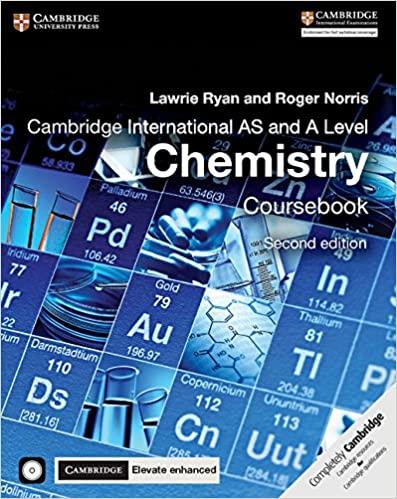A chemist was investigating the best way to produce 1,2-dichloroethane. He devised two methods, I and II,
Question:
A chemist was investigating the best way to produce 1,2-dichloroethane. He devised two methods, I and II, of doing this.
I. He reacted ethane with chlorine in the presence of UV light by the following reaction:
C2H6(g) + 2Cl2(g) → C2H4Cl2(l) + 2HCl(g)
After doing this he found that 600 g of ethane gave 148.5 g of C2H4Cl2.
a. i. How many moles of ethane are there in 600 g?
ii. How many moles of 1,2-dichloroethane would have been formed if the yield had been 100%?
iii. How many moles of 1,2-dichloroethane are there in 148.5 g?
iv. Calculate the percentage yield of 1,2-dichloroethane.
II. He reacted ethene with chlorine in the dark by the following reaction:
C2H4(g) + Cl2(g) → C2H4Cl2(l)
In this reaction 140 g of ethene gave 396 g of C2H4Cl2.
b. Calculate the percentage yield for this reaction. Show your working.
c. There are isomers of the compound C2H4Cl2. Draw the displayed formulae of the isomers and name them.
d. Choose from redox, substitution, elimination, addition and hydrolysis to give the type of reaction for:
i. Reaction I
ii. Reaction II.
Step by Step Answer:

Cambridge International AS And A Level Chemistry Coursebook
ISBN: 9781316637739
2nd Edition
Authors: Lawrie Ryan, Roger Norris





